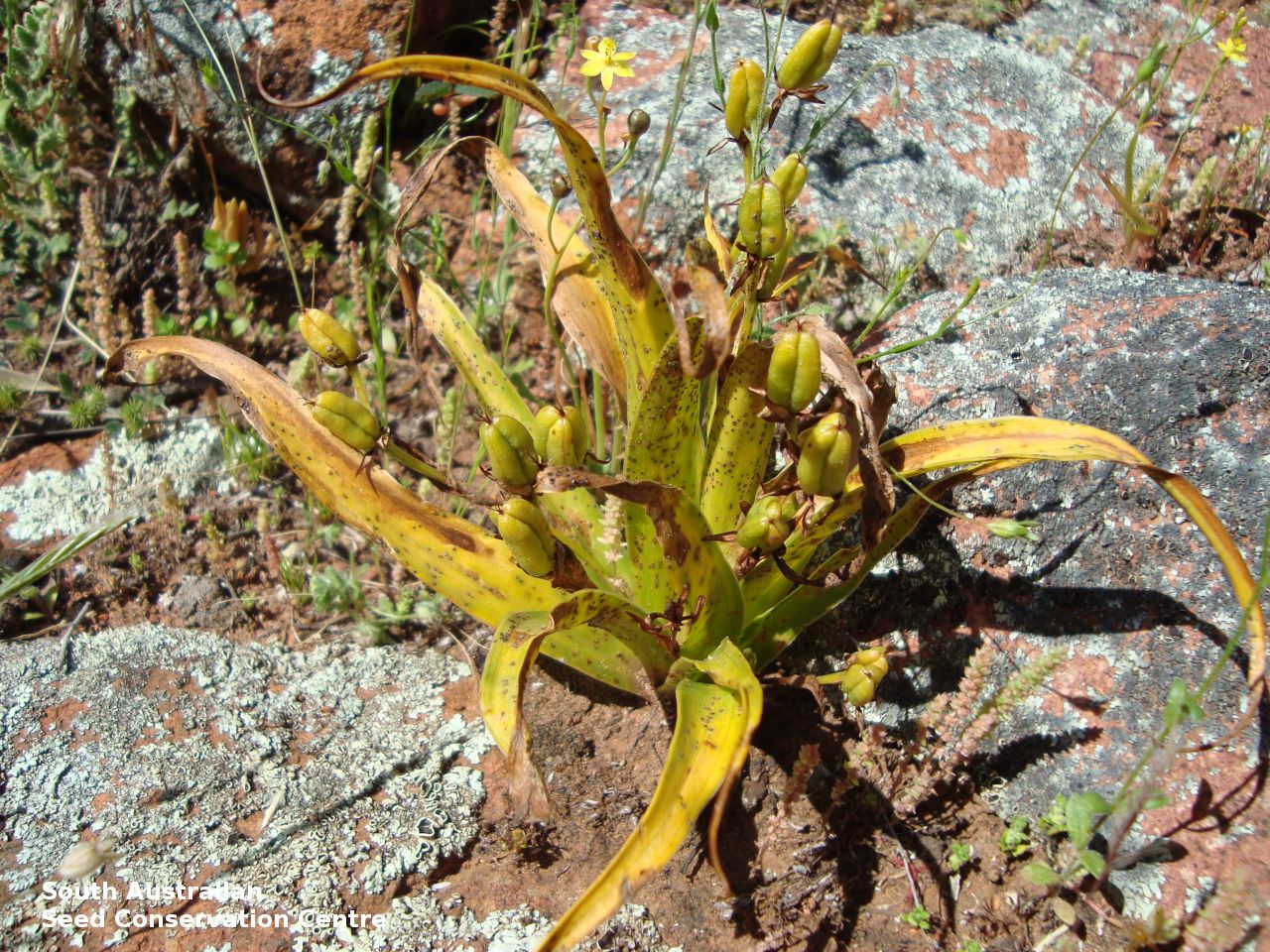
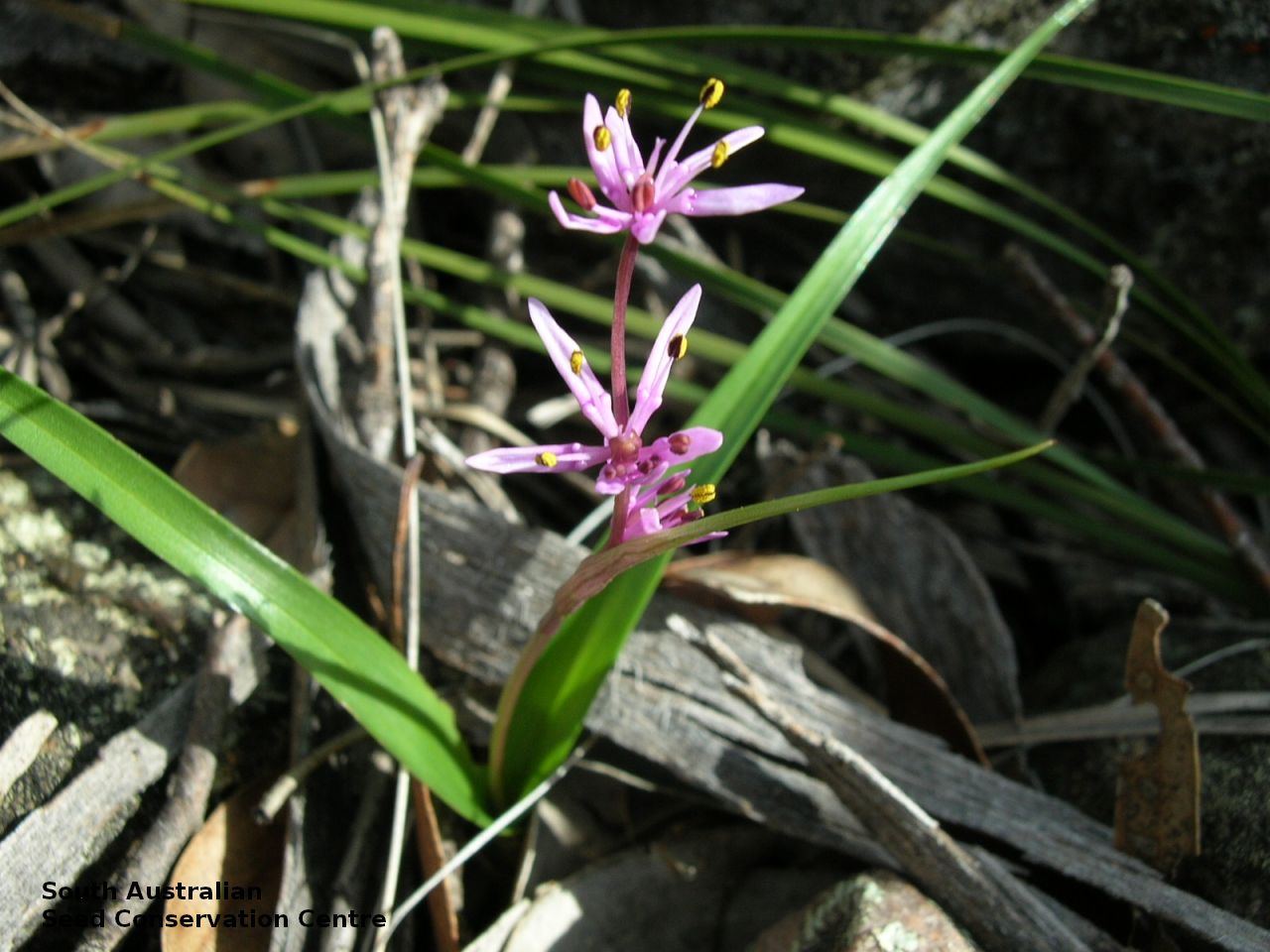
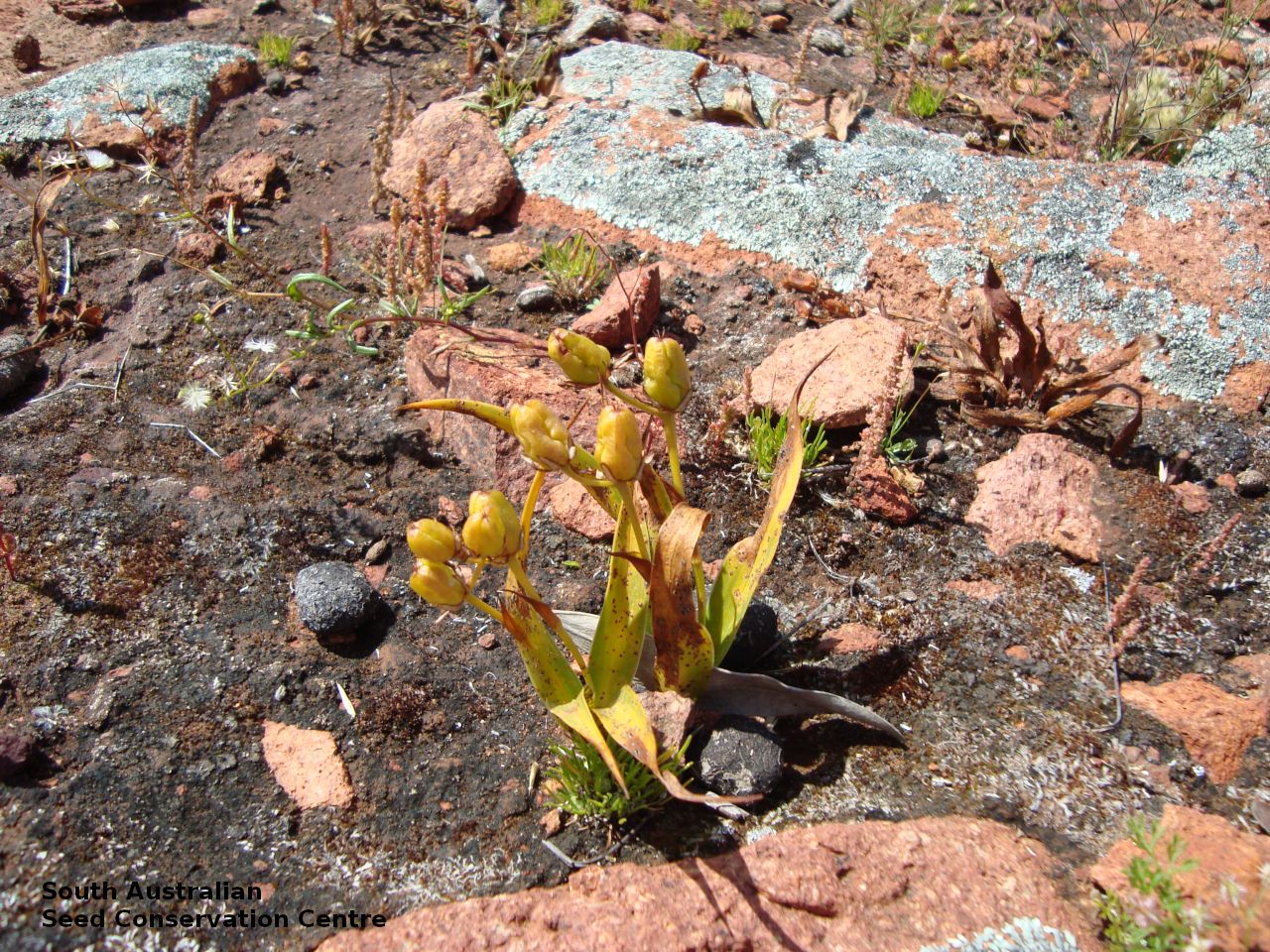
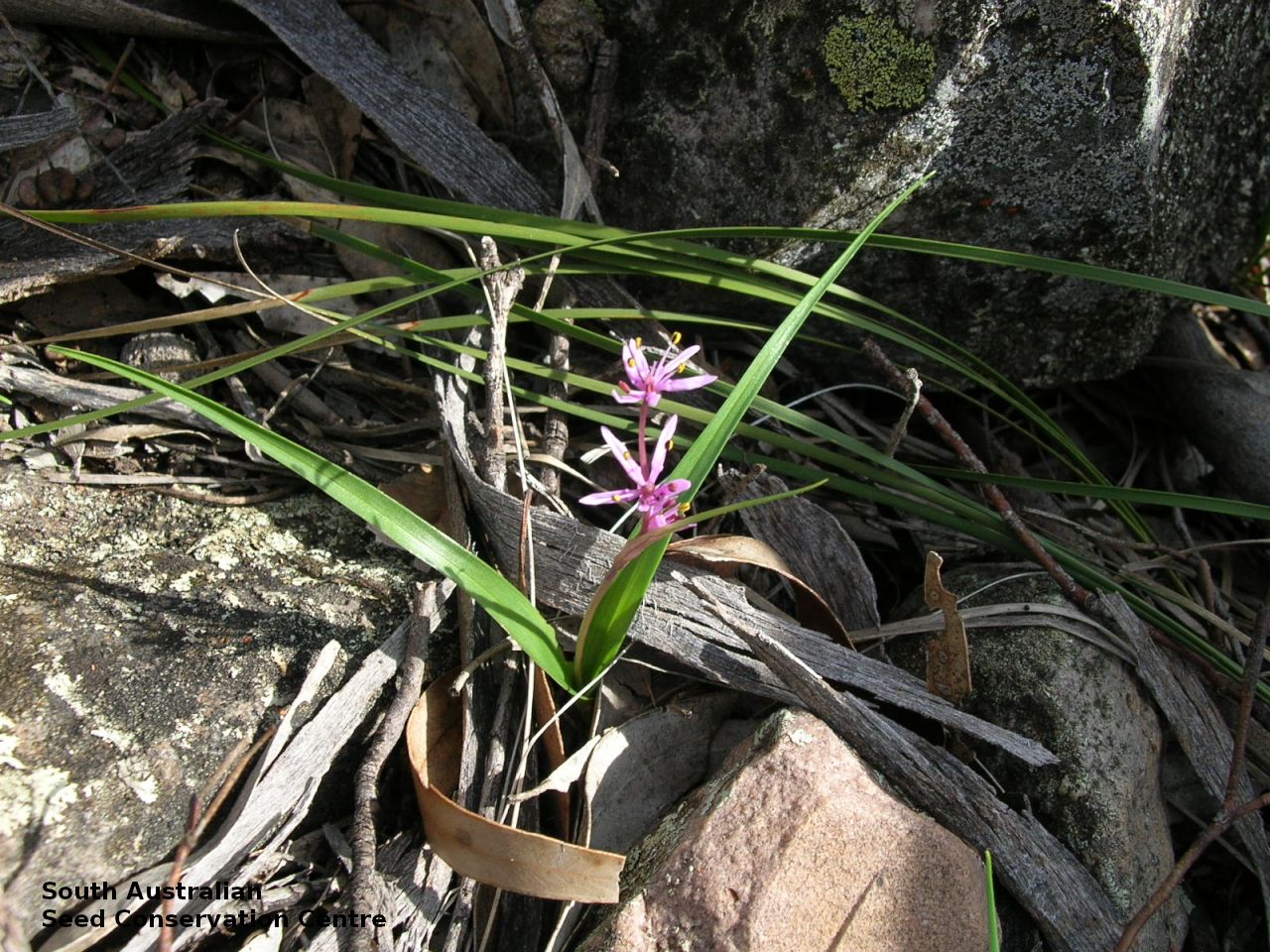
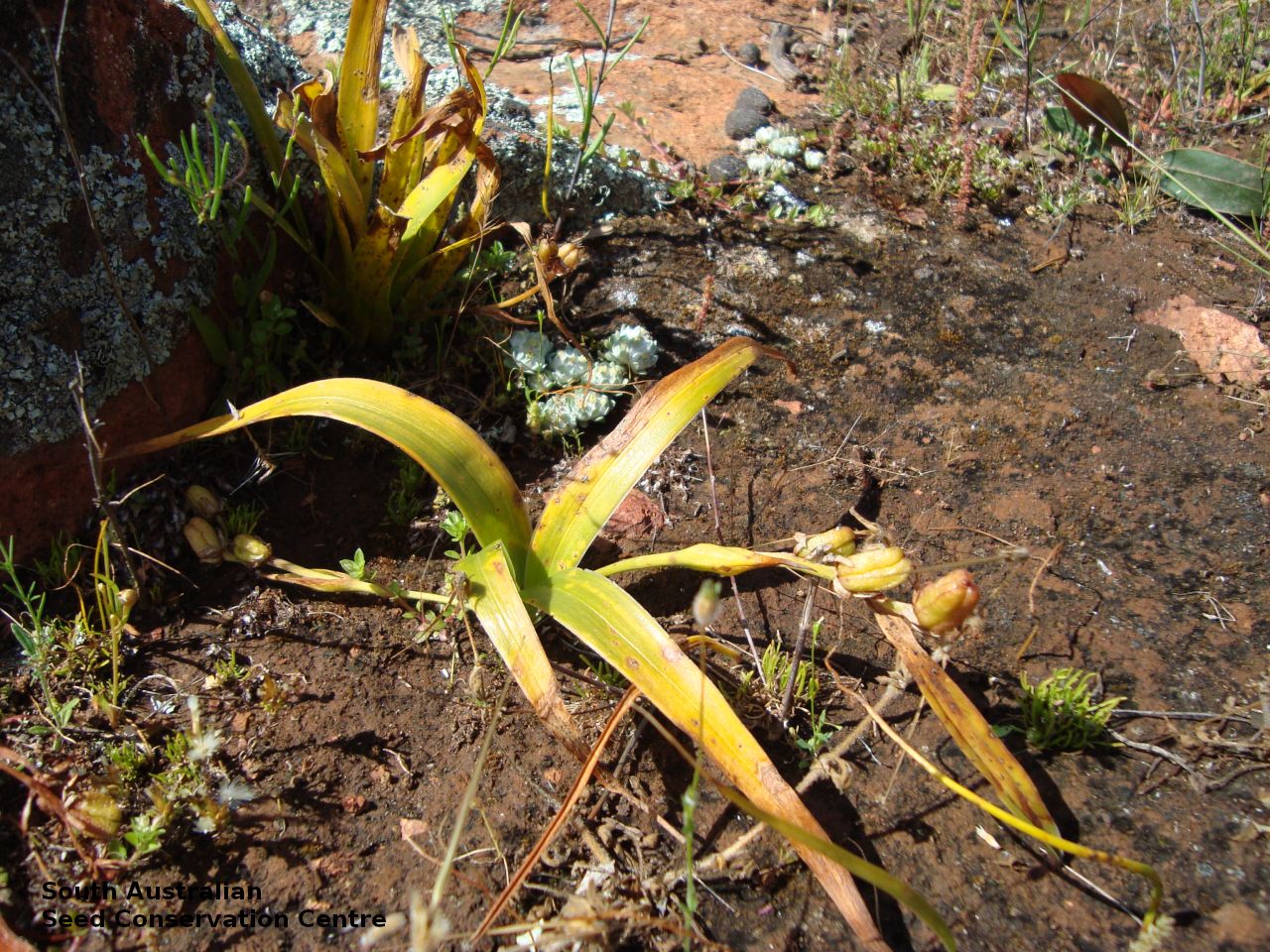
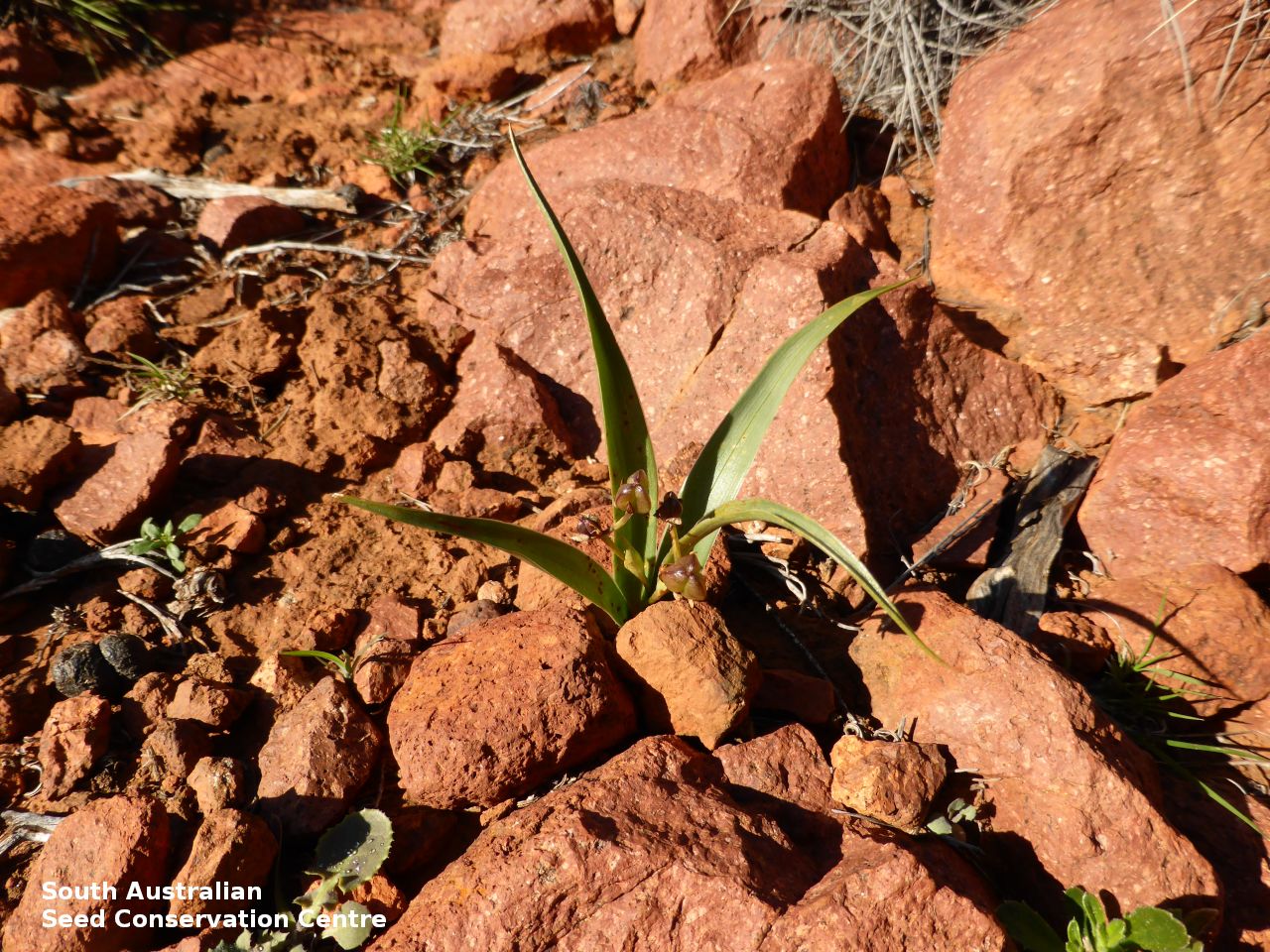
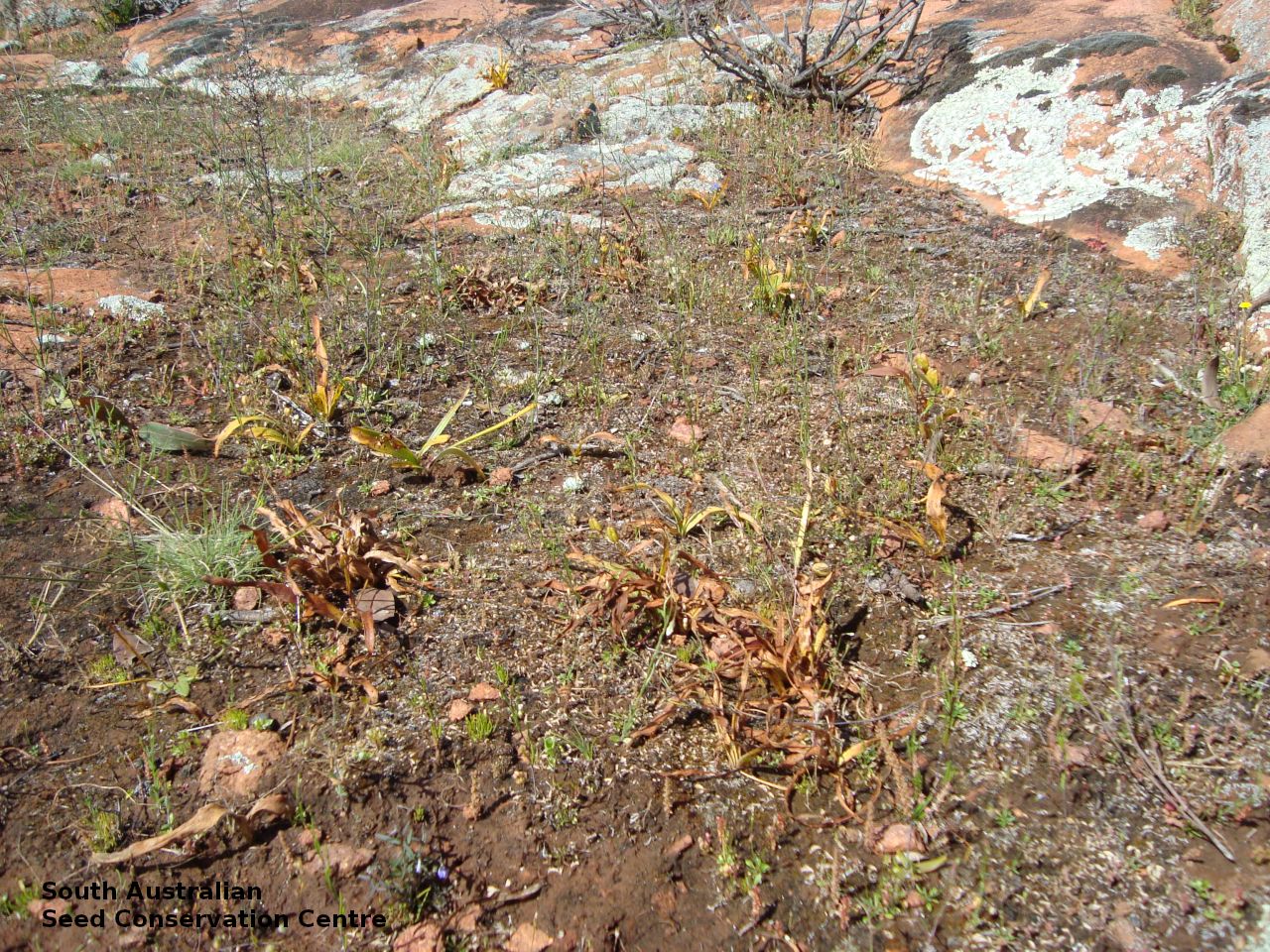
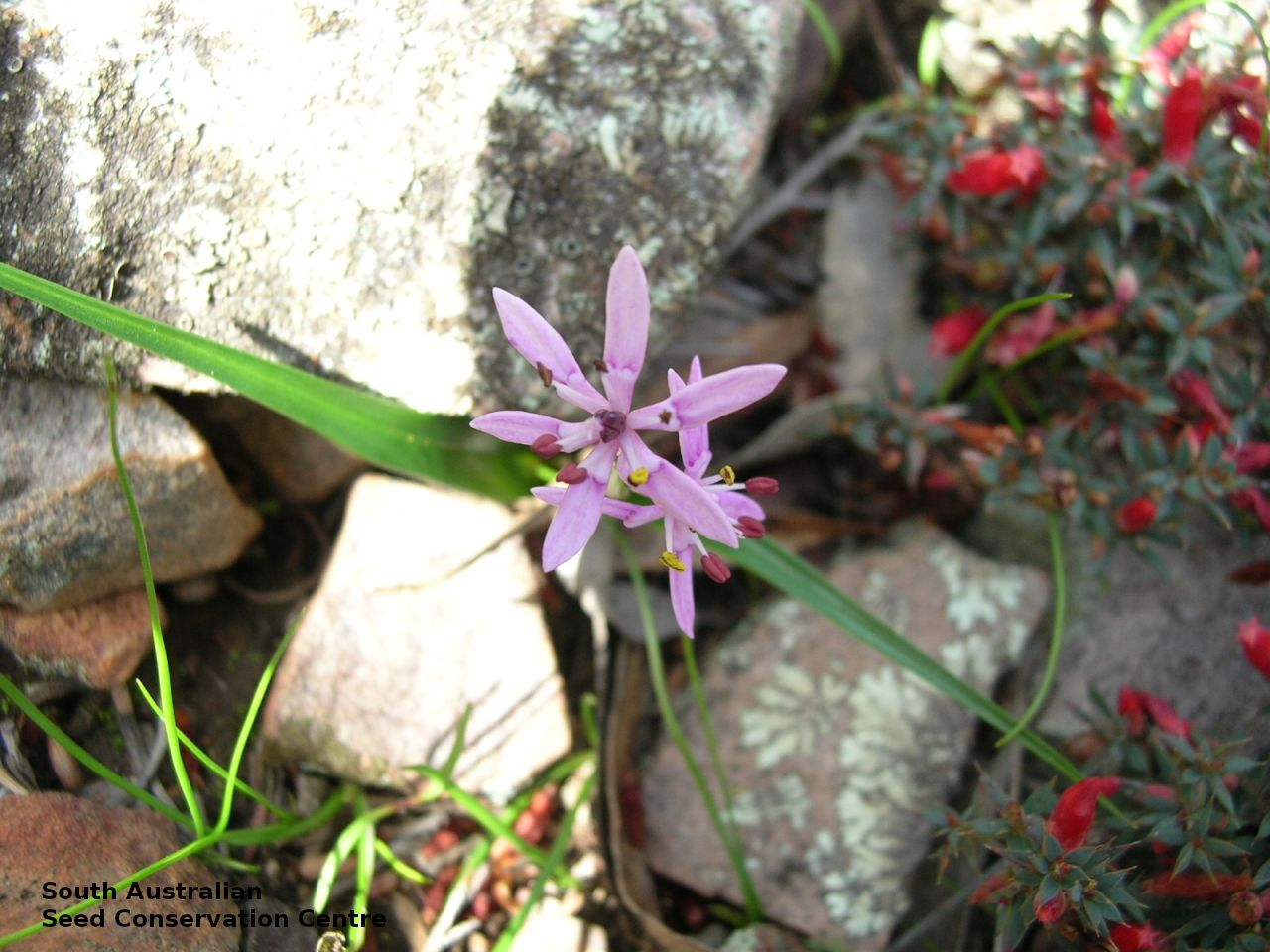
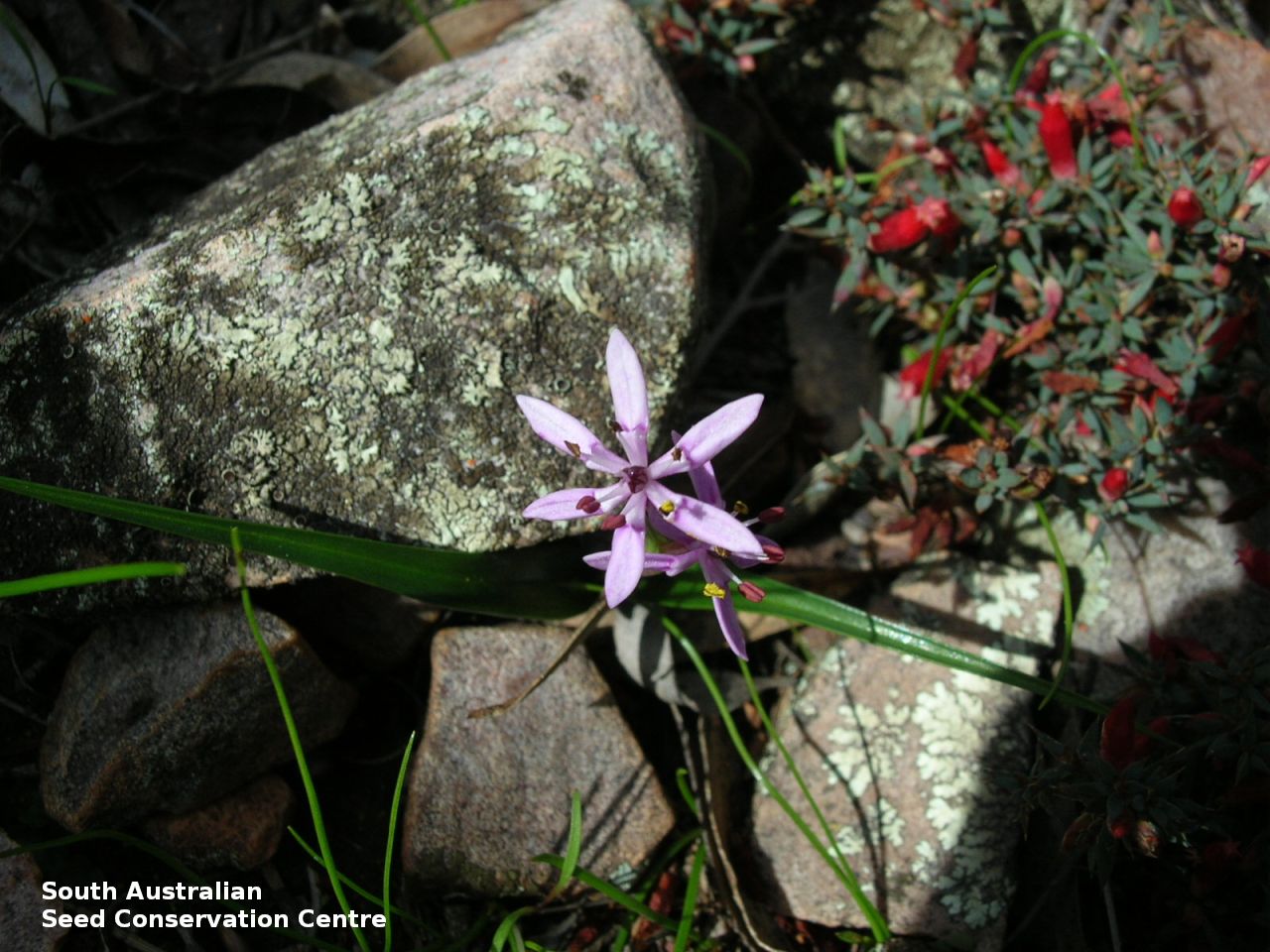
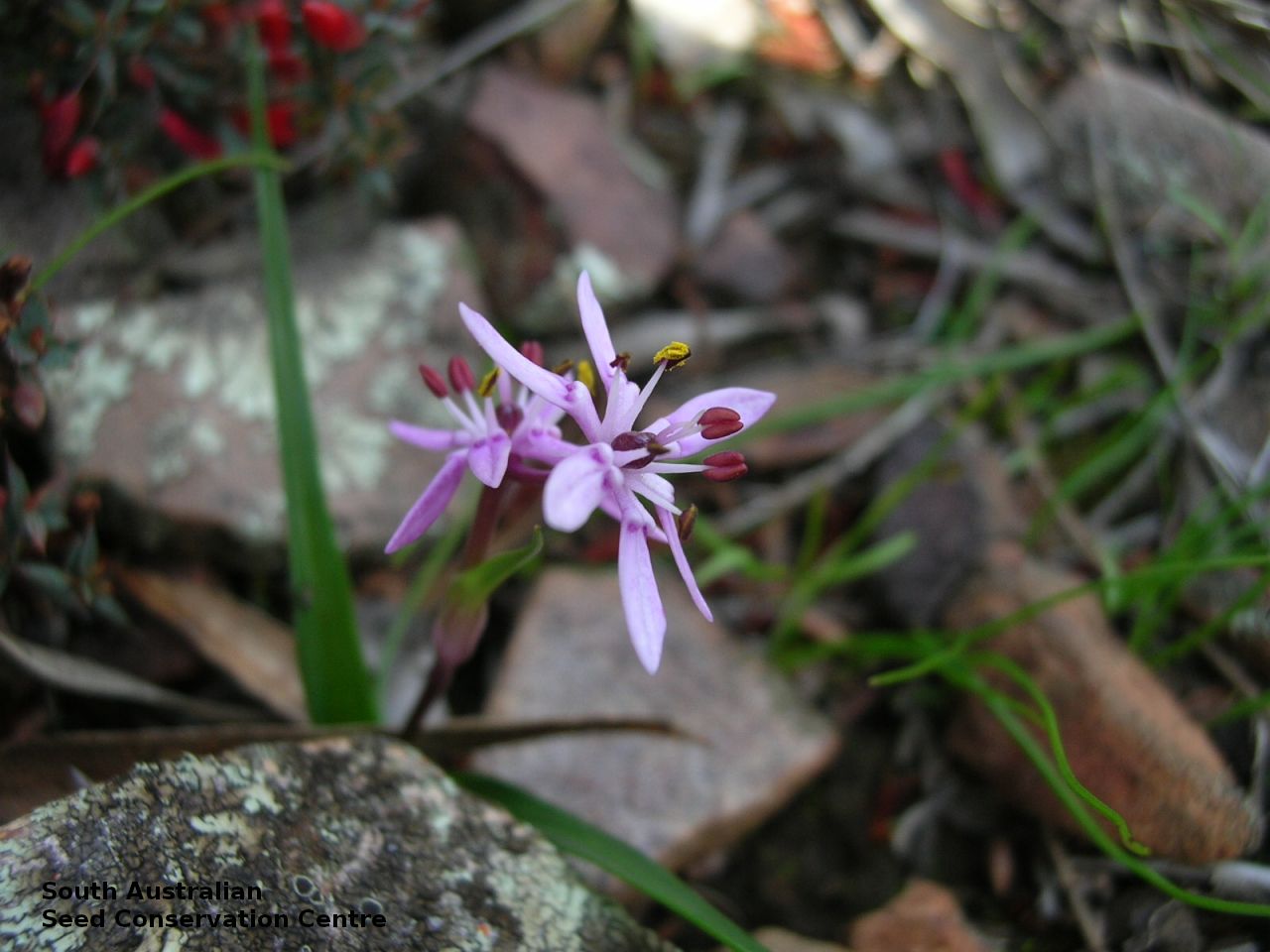
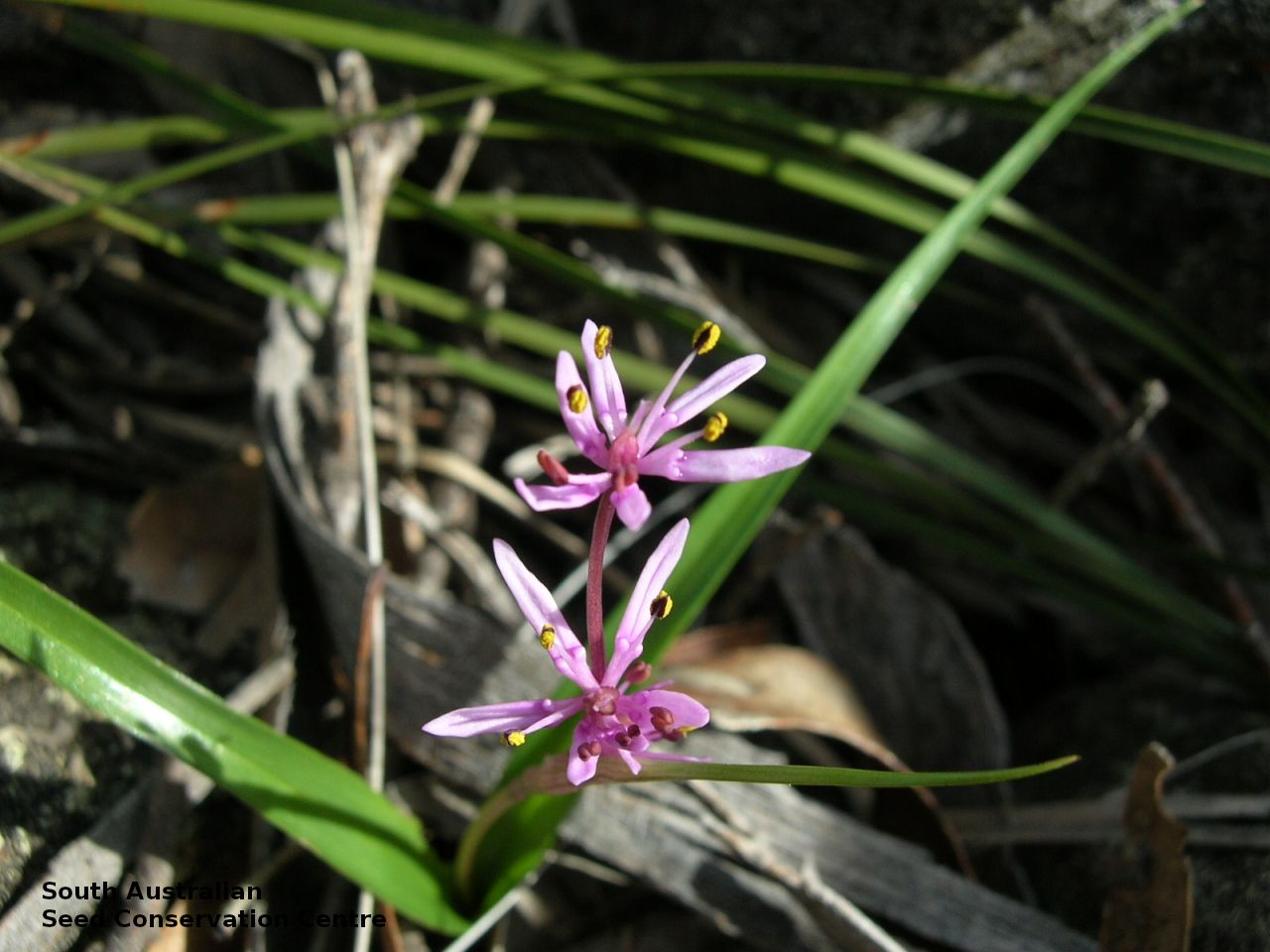

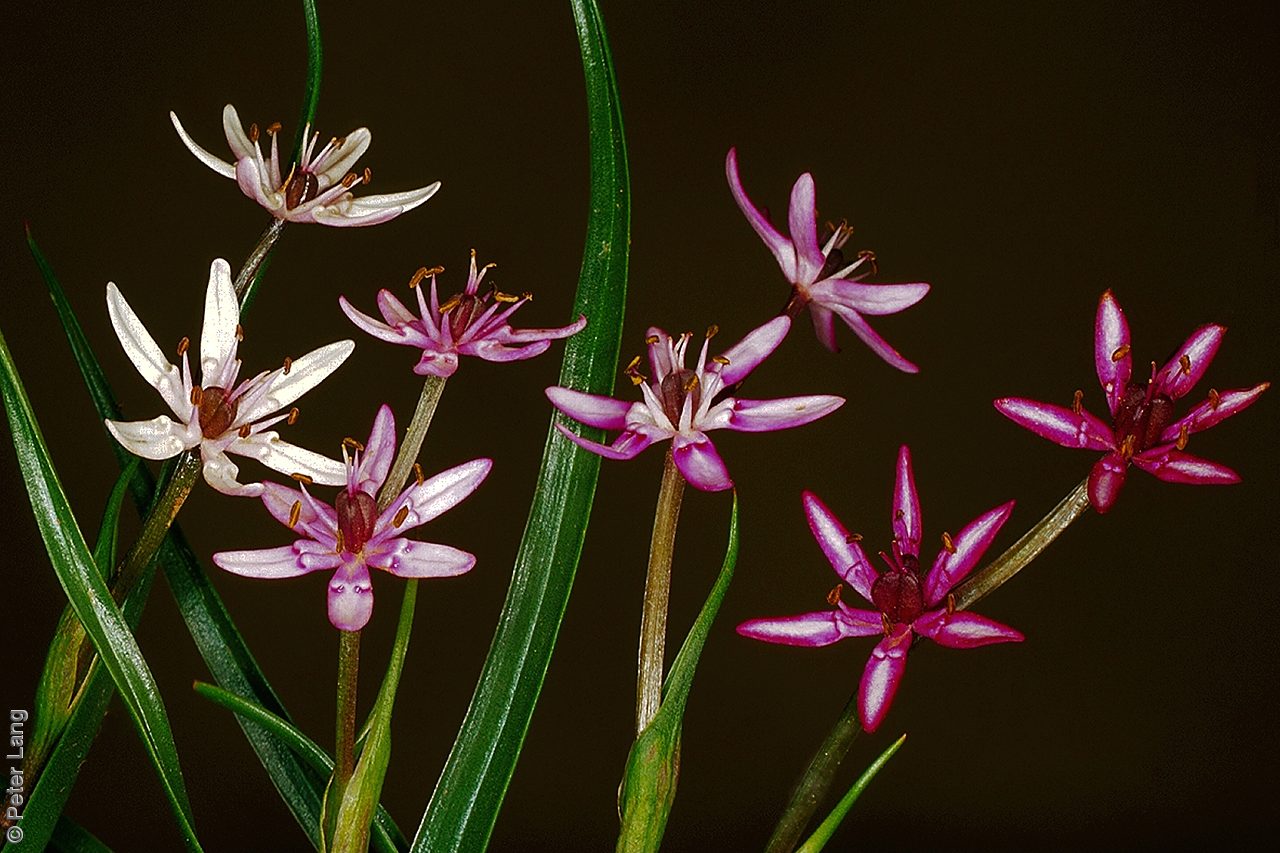
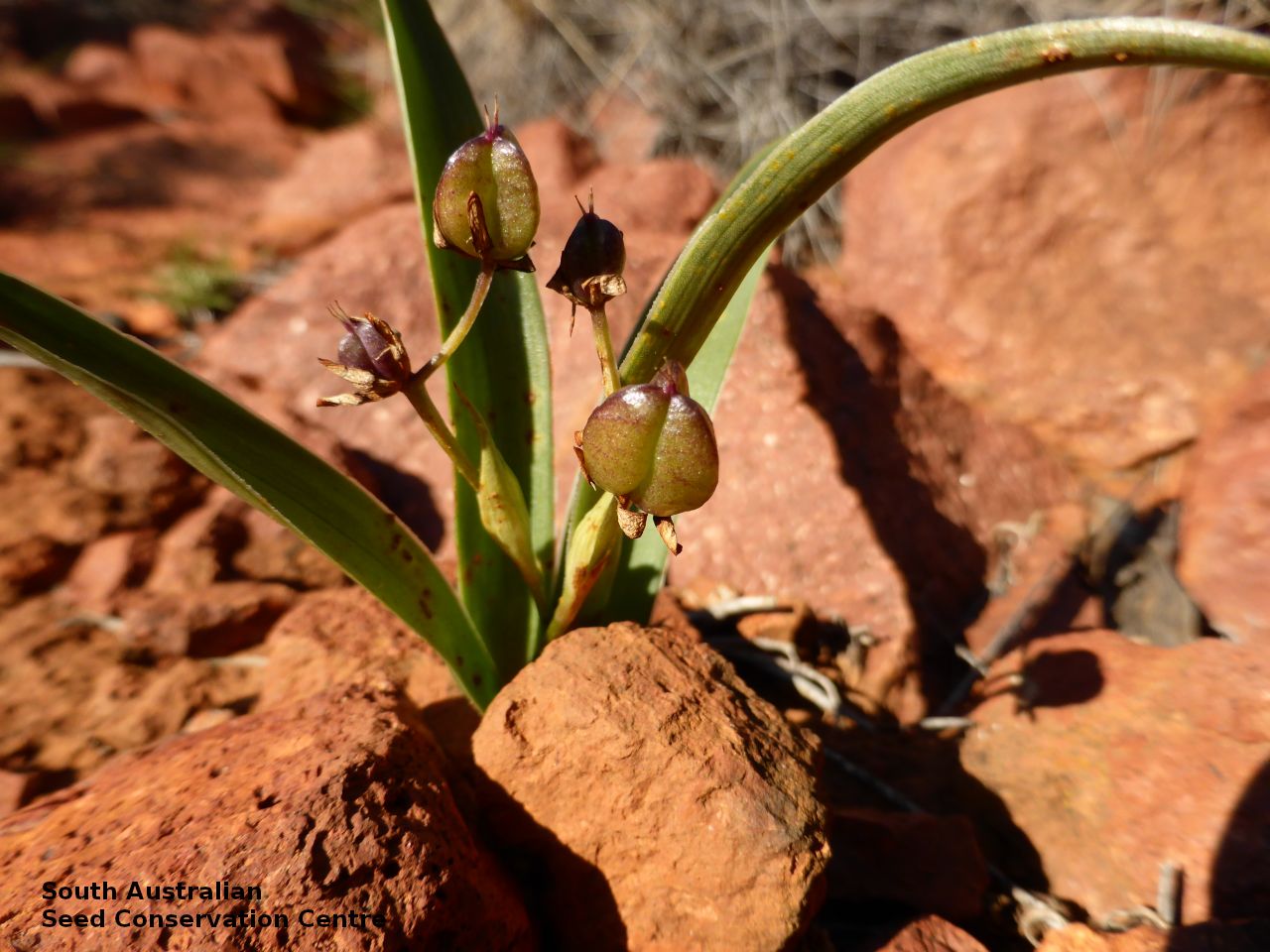
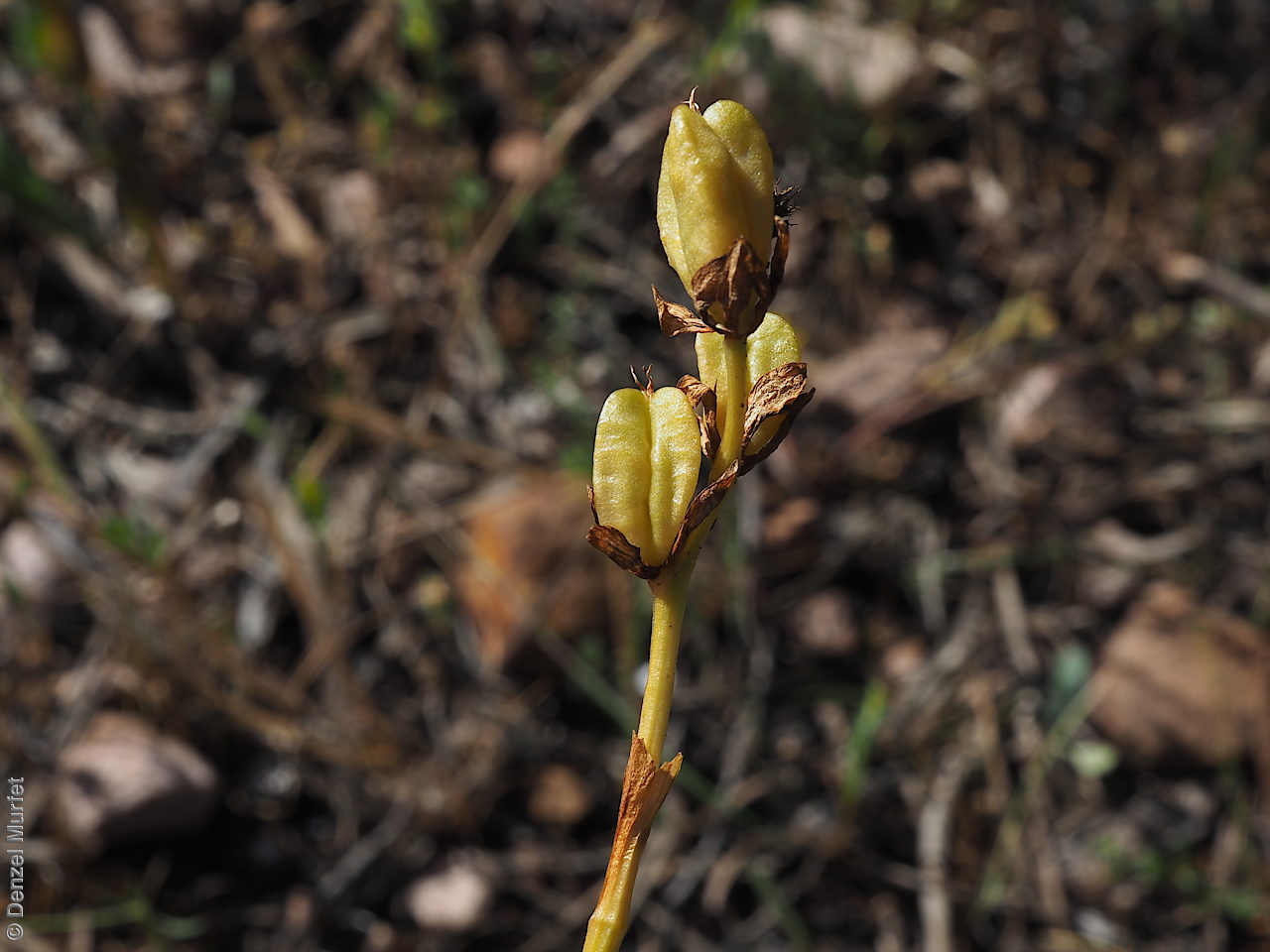
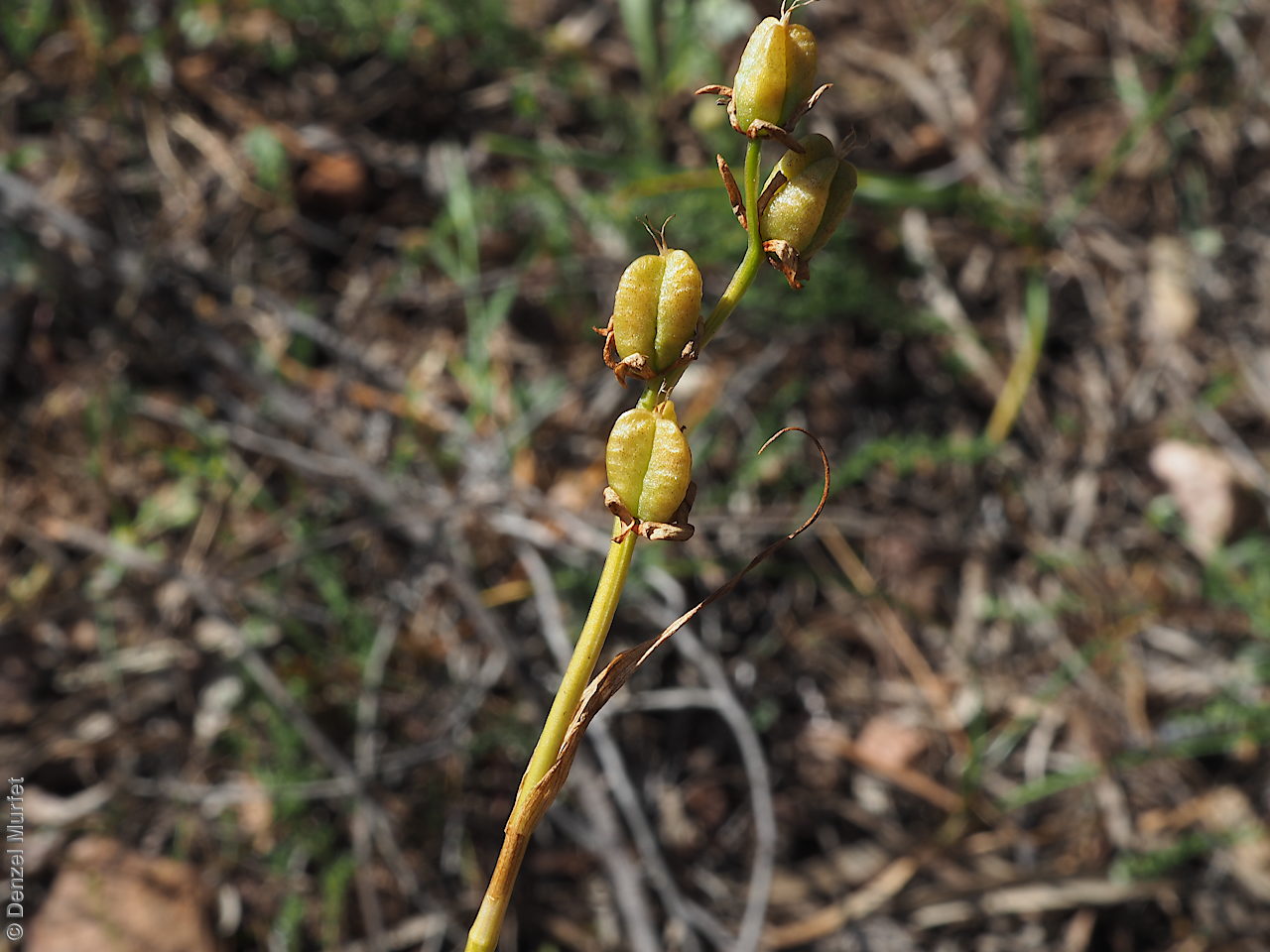
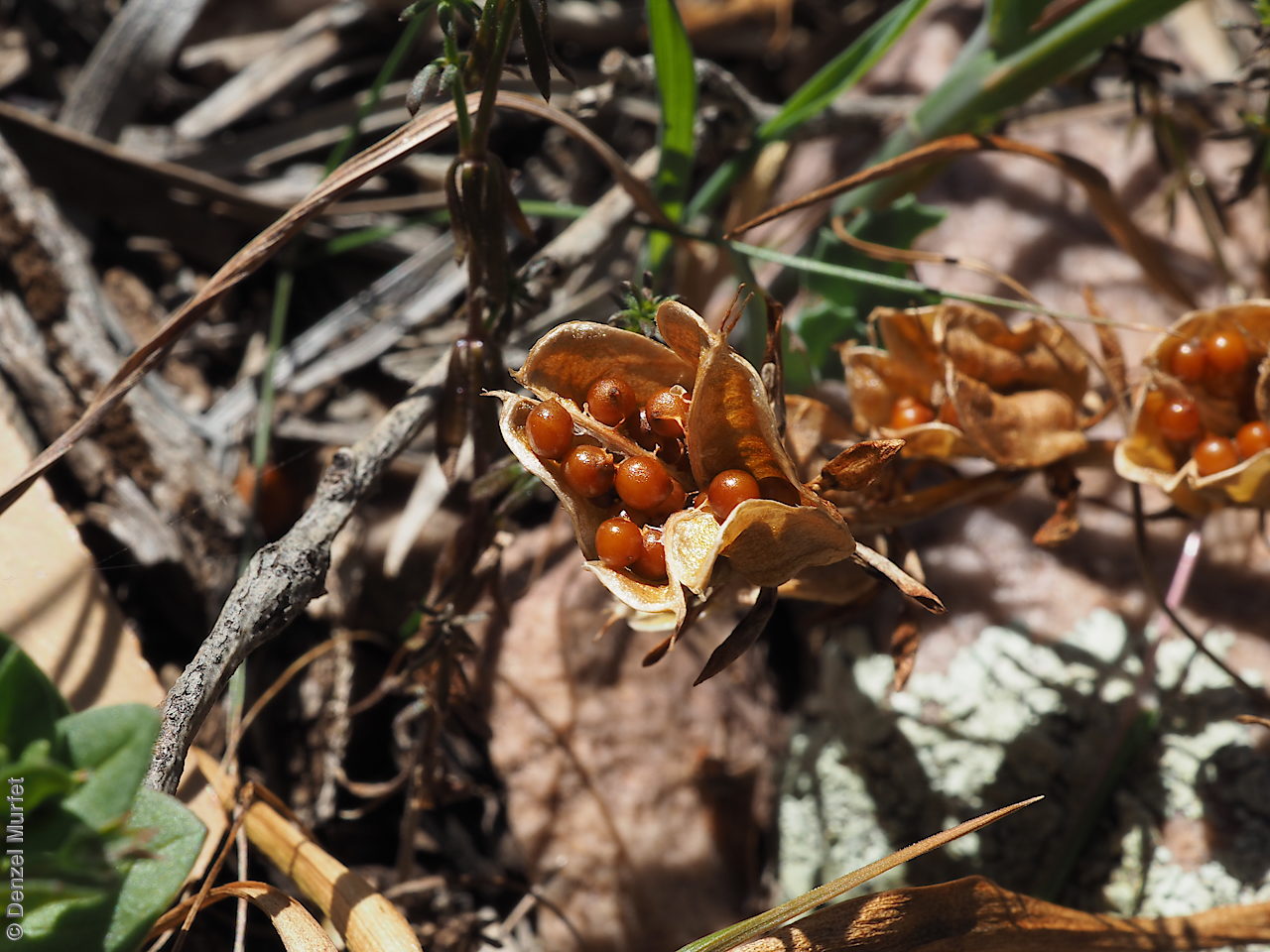
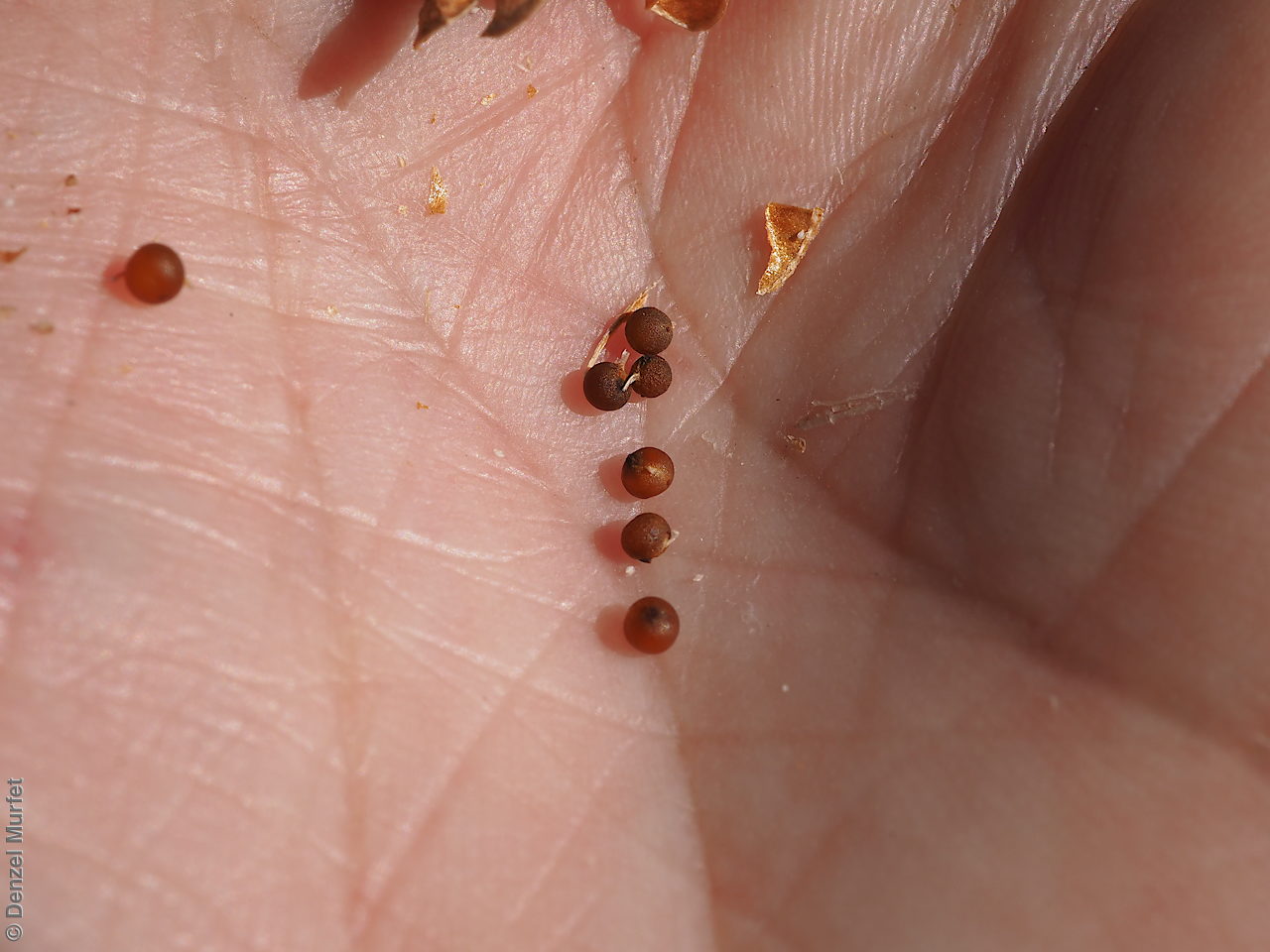
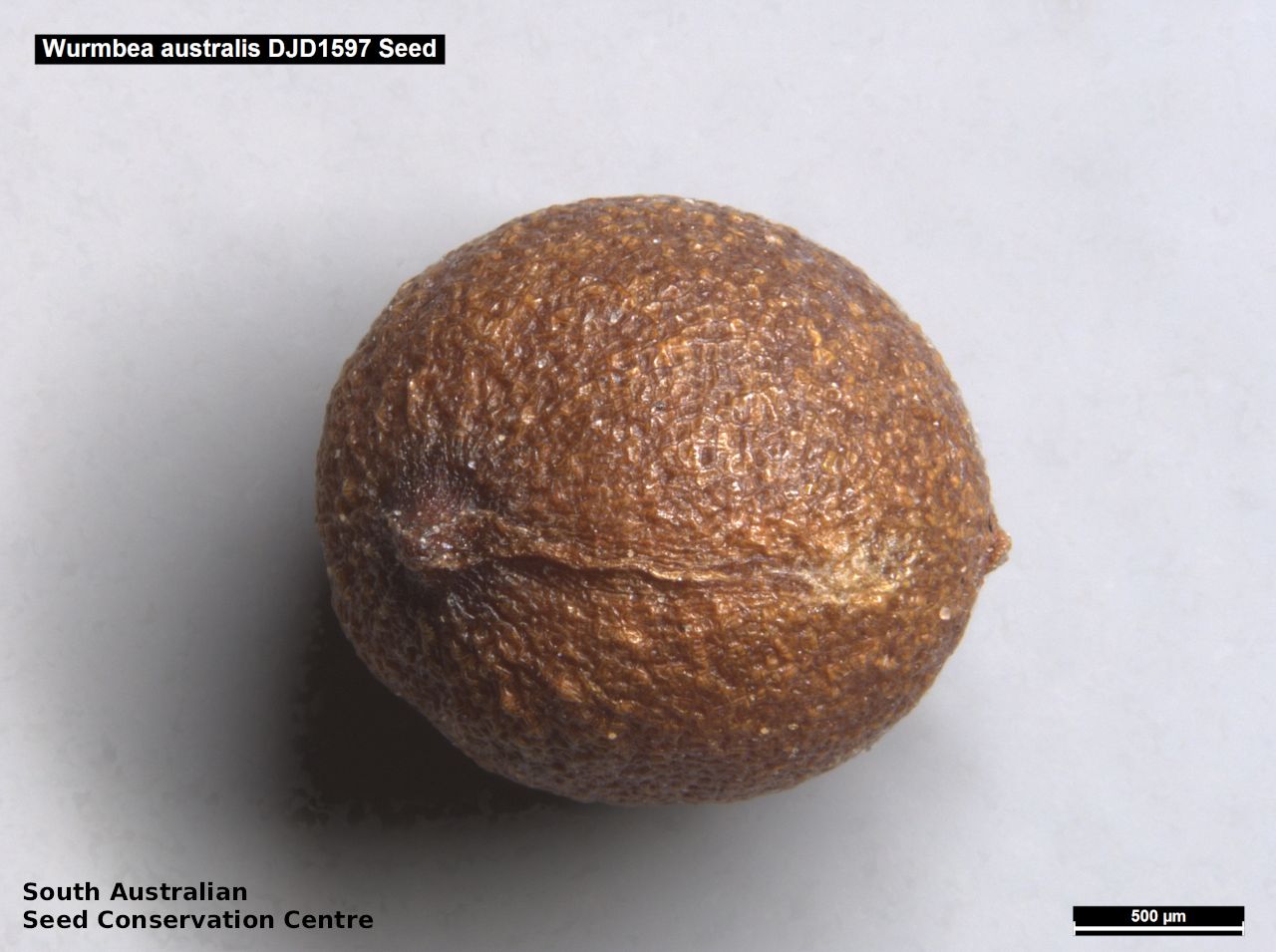
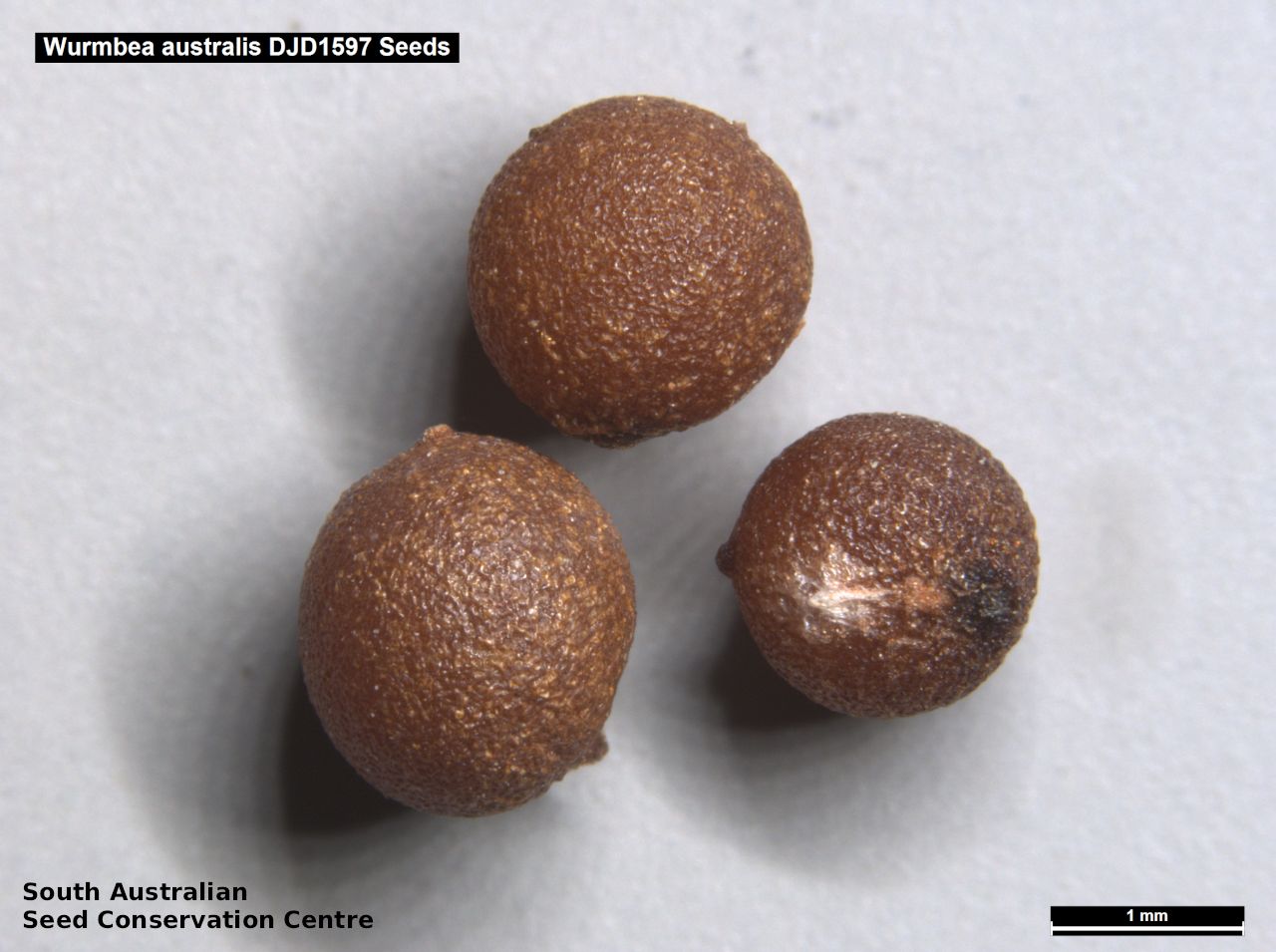
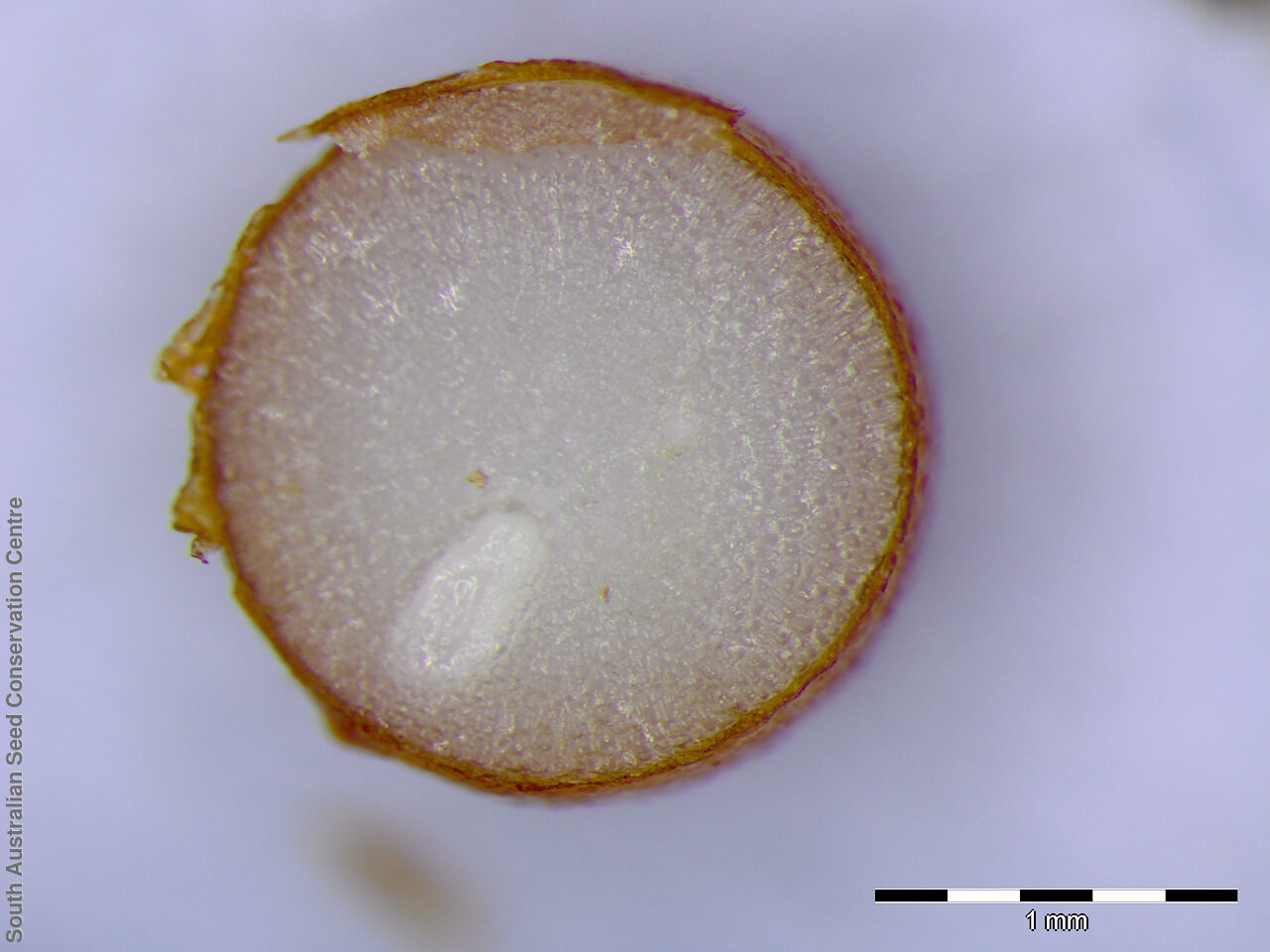

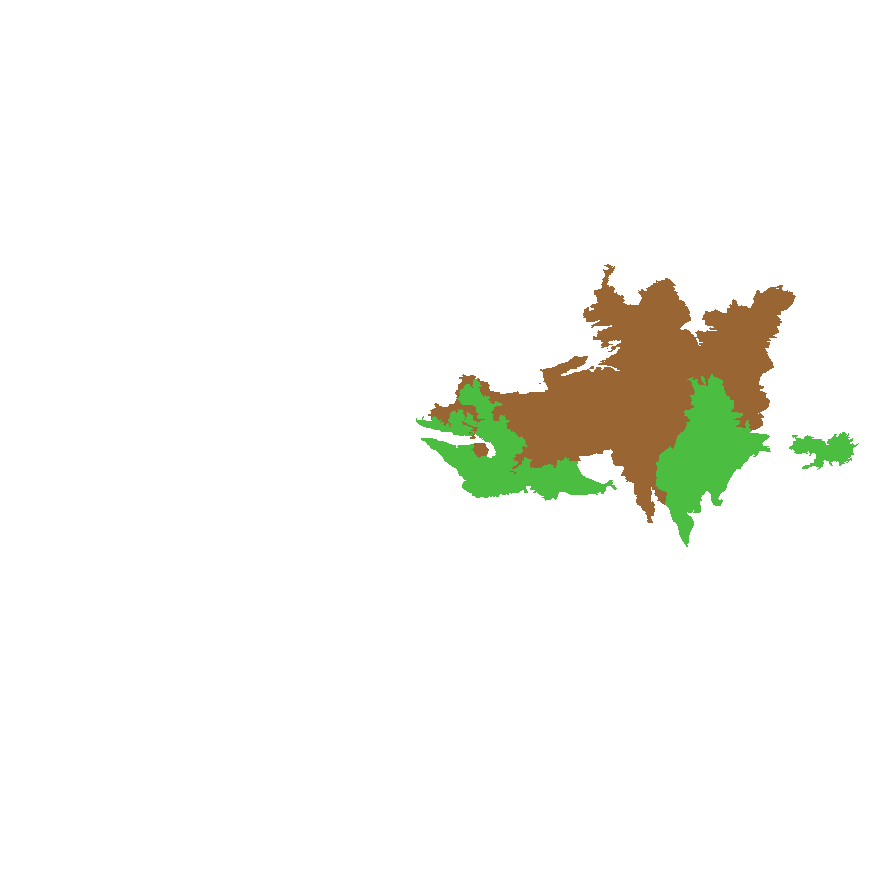
Botanical art
Prior names
Anguillaria dioica, partly
Wurmbea centralis ssp. australis
Common names
Inland Star-lily
Inland Nancy
Etymology
Wurmbea name after Friedrick Wilhelm von Wurmb, merchant and botanist in 18th century Batavia (Jakarta). Australis means of or from the south; referring to the more southern distribution of the species.
Distribution and status
Endemic to South Australia and found in the central part of the state, growing among rock outcrops . Native. Common in South Australia.
Herbarium regions: Lake Eyre, Gairdner-Torrens, Flinders Ranges, Eastern, Eyre Peninsula, Northern Lofty
NRM regions: Adelaide and Mount Lofty Ranges, Eyre Peninsula, South Australian Arid Lands
AVH map: SA distribution map (external link)
Plant description
Robust decumbent herb to 20 cm tall. Leaves 3 to 10 cm long and 24 mm wide, broad, leathery and easily recognisable even when not in flower. Inflorescence spike with 1-5 large bright pink flowers. Flowering between May and August. Fruits are pale brown box-like capsule to 25 mm long. Largest of any Australian Wurmbea. Seeds are orange brown globular seed to 2 mm diameter. Seed embryo type is linear under-developed.
Seed collection and propagation
Collect seeds between August and October. Collect mature capsules, those turning pale straw colour and containing hard brown seeds. Place the capsules in a tray and leave to dry for two weeks. Then rub the capsules gently by hand to dislodge the seeds. Use a sieve to separate the unwanted material. Store the seeds with a desiccant such as dried silica beads or dry rice, in an air tight container in a cool and dry place. From one collection, the seed viability was high, at 100%.
| Location | No. of seeds (weight grams) | Number of plants | Date collected | Collection number Collection location | Date stored | % Viability | Storage temperature |
|---|---|---|---|---|---|---|---|
| BGA MSB | 2,600 (12.8 g) 2,600 (12.8 g) | 100+ | 8-Sep-2006 | DJD564 Flinders Ranges | 1-Aug-2007 | 90% | -18°C |
| BGA | 6,100 (24.01 g) | 100+ | 20-Sep-2009 | DJD1597 Eyre Peninsula | 1-Jun-2010 | 100% | -18°C |
| BGA | 1,030 (1.49 g) | 50+ | 28-Nov-2016 | Aligator Gorge Flinders Ranges | 1-Nov-2017 | 100% | -18°C |
| BGA | 850 (0.83 g) | 100 | 1-Oct-2019 | JRG721 Flinders Ranges | 24-Jun-2020 | 100% | -18°C |
Number of plants: This is the number of plants from which the seeds were collected.
Collection location: The Herbarium of South Australia's region name.
% Viability: Percentage of filled healthy seeds determined by a cut test or x-ray.